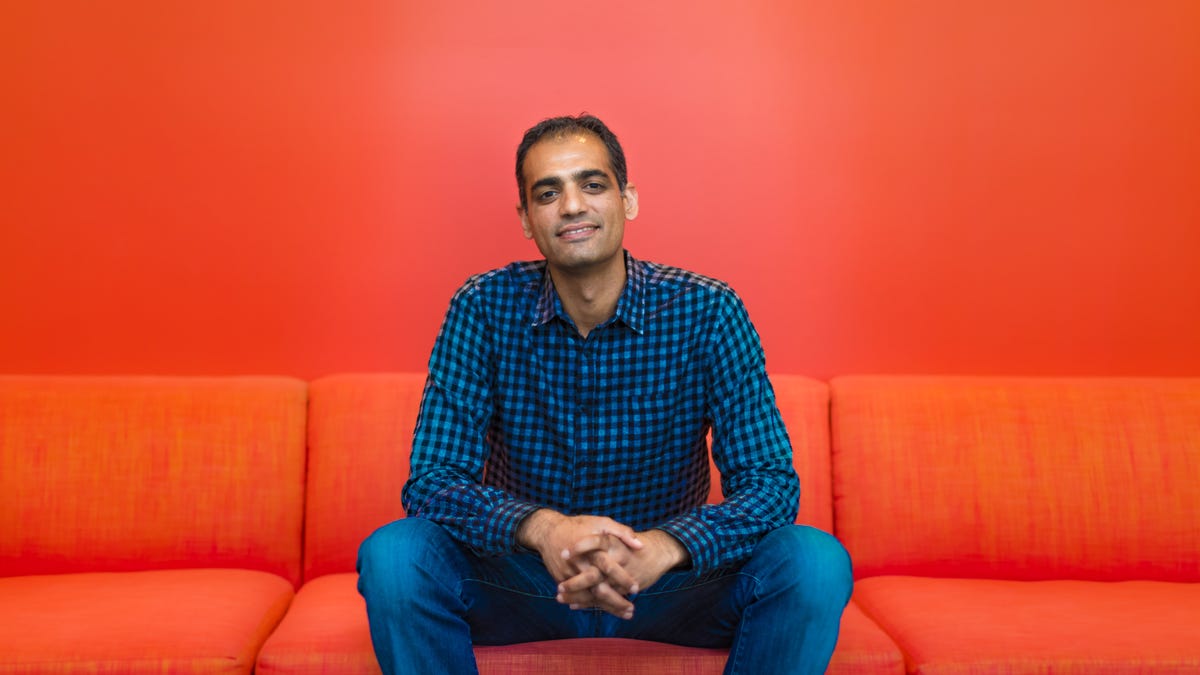With Android Go, Google tries again at emerging markets
A new version of Android aims to get the software to run smoother on entry-level phones. It could be one of Google's most important initiatives.

Sameer Samat, vice president of product management, said Android Go is about making Android work better for entry-level phones.
Two years ago, a Google senior vice president named Sundar Pichai flew back to his birth country of India to launch a major new initiative aimed at connecting "the next 5 billion."
He was referring to the vast number of people who did not yet have a smartphone. The effort was called Android One, and the goal was to teach hardware makers in emerging markets how to make high-quality, though affordable, phones.
Since then, a few things have changed. Pichai is now Google's CEO. And Android One isn't just focused on emerging markets anymore (more on that later). But Google is still trying to connect that next 5 billion.
On Wednesday, at the Google I/O developer conference in Mountain View, California, Google said it's starting a new program, focused on phone software, instead of phones themselves. It's called Android Go (though that's just an internal name), and the goal is to make Google's blockbuster mobile software better cater to people on entry-level phones.
Android is the most dominant mobile software on the planet. It powers 2 billion devices. Almost nine out of every 10 smartphones shipped globally is an Android phone.
But dig into the data and there are a couple problems. First, not all of those devices are created equal. The phones, for example, range from the premium Samsung Galaxy S8 and Google Pixel to lower-end handsets like the Micromax Canvas A1, which has a lower quality screen, barely any storage and a camera several generations behind the curve.
But that shouldn't matter, Google says. Those cheaper phones should still work well.
"Android has really been about bringing computing to everyone in the world," said Sameer Samat, vice president of product management for Android and Google Play, during an interview earlier this week at Google's Mountain View headquarters. "While hardware is half the story, the software also has to be tuned for the needs of users that have limited data connectivity."
More from Google I/O 2017
Android Goes for it
With Android Go, Google's first goal was to make its own software work better with entry-level phones. That meant stuff like reworking apps like YouTube and Maps, as well as the Google Play store for downloading apps and entertainment, to be more careful about data usage and spotty internet connections.
So what happened to Android One, that initiative from a couple years ago? It's sticking around, but now it's about making sure those entry-level Android phones get regular security updates and a "purer" Android experience, with an app launcher and user interface uncluttered by some of the flourishes handset makers might add. Android One is also focused on the entire market now, instead of just the low end, Samat said.
For Google, reaching that other 5 billion is crucial to making sure its business can grow. The more people who have smartphones, the more they might use them to search for things on Google or watch a YouTube video.
But Alphabet, Google's parent company, has other initiatives still focused on connecting the unconnected. Project Loon, part of X (formerly Google X) is developing balloons that float through the stratosphere, beaming down Wi-Fi at remote regions. Facebook has a similar initiative, though its aircraft of choice is a massive drone called Aquila, with the wingspan of a Boeing 737.
With Android Go, Google is paying most attention to the way a phone uses data because most people on Go will likely be on prepaid plans. A data management screen in the phone's quick settings will tell you how much data you have left.
A rejiggered version of YouTube, aptly called YouTube Go and in beta in India, gives you a preview of a video before you watch -- so you can decide if you really want to spend your data on it. You can also choose your viewing quality right from the start. Another feature will let you save a video to your phone so you can watch it later when you don't have connectivity. You can even share it with a friend through a peer-to-peer transfer, all without using any mobile data.
Android Go will also have a special version of the Play store that highlights apps that work better with entry-level phones. For example, an app might be featured because it has a good offline mode.
"We took a step back to see what it would take for more users in the world to have a smartphone," said Samat. "We all have smartphones," he continued, gesturing at everyone in the room. "So we understand what they've meant in terms of our daily lives."
CNET Magazine: Check out a sampling of the stories you'll find in CNET's newsstand edition.
Life, disrupted: In Europe, millions of refugees are still searching for a safe place to settle. Tech should be part of the solution. But is it? CNET investigates.

